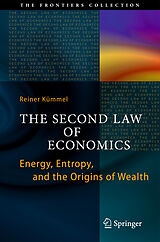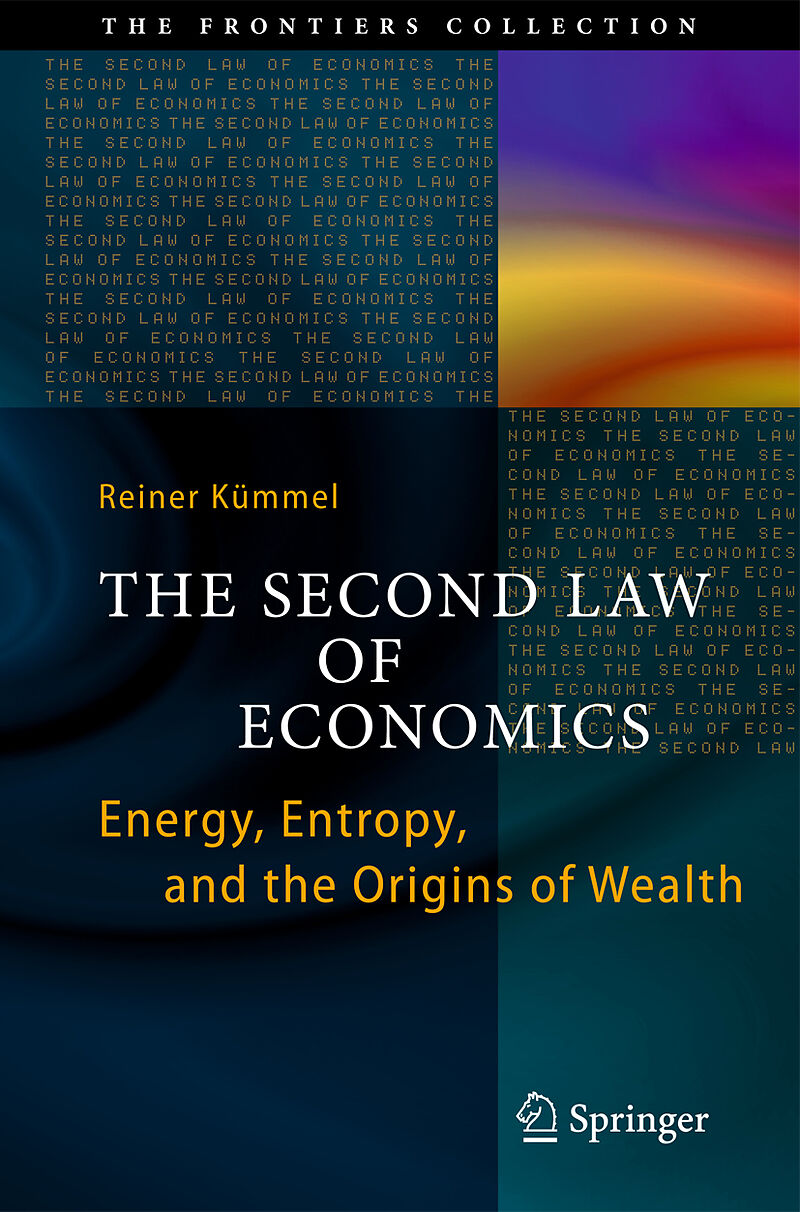The Second Law of Economics
Einband:
Fester Einband
EAN:
9781441993649
Untertitel:
Energy, Entropy, and the Origins of Wealth
Autor:
Reiner Kümmel
Herausgeber:
Springer New York
Auflage:
2011
Anzahl Seiten:
316
Erscheinungsdatum:
28.06.2011
ISBN:
1441993649
Does economics conform to the First and Second Laws of Thermodynamics? This important and fascinating tour of these laws and their influence on natural, technological, and social evolution uses them to analyze economic growth in Germany, Japan and the USA.
Nothing happens in the world without energy conversion and entropy production. These fundamental natural laws are familiar to most of us when applied to the evolution of stars, biological processes, or the working of an internal combustion engine, but what about industrial economies and wealth production, or their constant companion, pollution? Does economics conform to the First and the Second Law of Thermodynamics? In this important book, Reiner Kümmel takes us on a fascinating tour of these laws and their influence on natural, technological, and social evolution. Analyzing economic growth in Germany, Japan, and the United States in light of technological constraints on capital, labor, and energy, Professor Kümmel upends conventional economic wisdom by showing that the productive power of energy far outweighs its small share of costs, while for labor just the opposite is true. Wealth creation by energy conversion is accompanied and limited by polluting emissions that are coupled to entropy production. These facts constitute the Second Law of Economics. They take on unprecedented importance in a world that is facing peak oil, debt-driven economic turmoil, and threats from pollution and climate change. They complement the First Law of Economics: Wealth is allocated on markets, and the legal framework determines the outcome. By applying the First and Second Law we understand the true origins of wealth production, the issues that imperil the goal of sustainable development, and the technological options that are compatible both with this goal and with natural laws. The critical role of energy and entropy in the productive sectors of the economy must be realized if we are to create a road map that avoids a Dark Age of shrinking natural resources, environmental degradation, and increasing social tensions.
Reconsiders economics from the perspective of natural laws Shows how energy and its conversion into physical work accounts for most of the growth that mainstream economics attributes to technological progress and related concepts Describes energy needs and options for the future Explores consequences for economic growth and environmental sustainability Includes supplementary material: sn.pub/extras
Inhalt
Chapter 1: PROLOGUE: Time Travel with Abel
From Big Bang to Sun
Light on Earth
As Life Goes
Fire and Grain
Ancient Empires
Wind Power, Gunpowder and Wood
Industrial Revolution
Golden Age
Outlook
References Chapter 2: ENERGY
2.1 Understanding the Prime Mover
2.1.1 How the Energy Concept Evolved
2.1.2 Energy for All and Forever
2.1.3 Energy Quantity and Quality
2.2 Sun and Earth
2.2.1 Energy Production in the Sun
2.2.2 The Natural Greenhouse Effect
2.2.3 Solar Activity and Climate
2.2.4 Photosynthesis, Respiration and Food Production
2.3 Amplifiers of Muscles and Brain
2.3.1 Heat Engines
2.3.2 Transistors
2.4 Energy Services
2.4.1 Freedom from Toil
2.4.2 Comfort, Mobility, Information
2.4.3 Political Power
2.5 Consumption - and What is Left
2.5.1 Consumption of Energy Carriers
2.5.2 Reserves and Resources of Fossil and Nuclear Fuels
2.5.3 Renewable Energies
2.5.4 Energy Conservation
2.6 Technological Perspectives
2.6.1 Fission
2.6.2 Fusion
2.6.3 Solar Power from Deserts and Space
2.7 Appendix A: Basic Forms of Energy
2.7.1 System Energies
2.7.2 Work and Heat
2.7.3 Enthalpy and Exergy
2.7.4 Thermodynamic Potentials
2.8 Appendix B: Energy Units References Chapter 3: ENTROPY
3.1 No Free Lunch
3.2 Equipartition, the Toddler and Entropy
3.3 States of Systems
3.4 The Way Things Change
3.4.1 Driving Towards Disorder
3.4.2 Haste Makes Waste: Irreversible Processes
3.5 Arrow of Time
3.6 Entropy Production and Emissions
3.6.1 Sources and Substances
3.6.2 Anthropogenic Greenhouse Effect
3.6.3 Pollution Control and Heat Equivalents of NO X , SO 2 , CO 2 , and Nuclear Waste
3.7 Appendix:Non-equilibrium Thermodynamics and Second Law
3.7.1 Gibbs' Fundamental Equation
3.7.2 Balance Equations
3.7.3 Density of Entropy Production References Chapter 4: ECONOMY
4.1 Complementary Perspectives on the Economy
4.2 Energy, Entropy and the Growth Paradigm
4.3 Pre-Analytic Vision: The Law of Diminishing Returns
4.4 How Technological Constraints Change Economic Equilibrium
4.4.1 Output Elasticities
4.4.2 Shadow Prices
4.4.3 Appendix 1: Maximizing Profit
4.4.4 Appendix 2: Maximizing Overall Welfare
4.5 The Second Law of Economics
4.5.1 Levels of Wealth Creation
4.5.2 The Technological Constraints on Capital, Labor and Energy
4.5.3 Modeling Production
4.5.4 Economic Growth in German, Japan, and the USA
4.5.5 The Productive Powers of Capital, Labor, Energy, and Creativity
4.5.6 Cointegration
4.5.7 The "Useful Work" Approach
4.5.8 Pollution, Recycling and Perspectives on Growth
4.5.9 Appendix 3: Aggregating Output and Factors in Physical Terms
4.5.10 Appendix 4: Explicit Constraint Equations
4.5.11 Appendix 5: Empirical Data of Output and Inputs
4.5.12 Appendix 6: Determining Technology Parameters
4.6 Distribution of Wealth
4.6.1 Adam Smith's Concepts and Karl Marx' Error
4.6.2 Rich and Poor
4.6.3 Taxes and Debts
4.6.4 Discounting the Future
4.7 Summary and Discussion References Chapter 5: EPILOGUE: Decisions under Uncertainty
Ethics
Reason
References GLOSSARY INDEX

Leider konnten wir für diesen Artikel keine Preise ermitteln ...
billigbuch.ch sucht jetzt für Sie die besten Angebote ...
Die aktuellen Verkaufspreise von 6 Onlineshops werden in Realtime abgefragt.
Sie können das gewünschte Produkt anschliessend direkt beim Anbieter Ihrer Wahl bestellen.
Loading...
Die aktuellen Verkaufspreise von 6 Onlineshops werden in Realtime abgefragt.
Sie können das gewünschte Produkt anschliessend direkt beim Anbieter Ihrer Wahl bestellen.
| # | Onlineshop | Preis CHF | Versand CHF | Total CHF | ||
|---|---|---|---|---|---|---|
| 1 | Seller | 0.00 | 0.00 | 0.00 |
